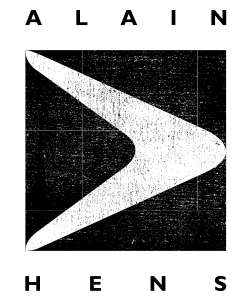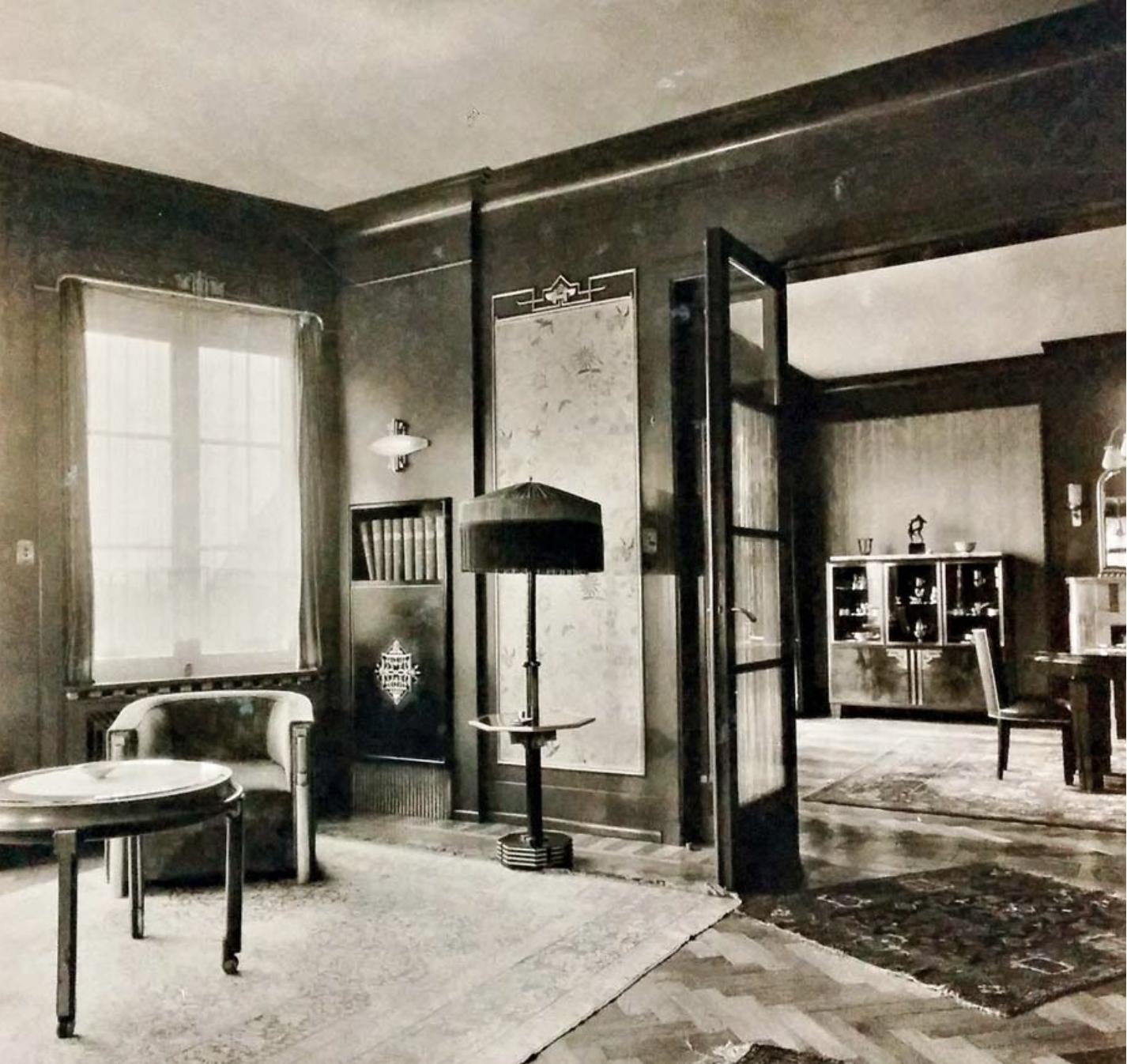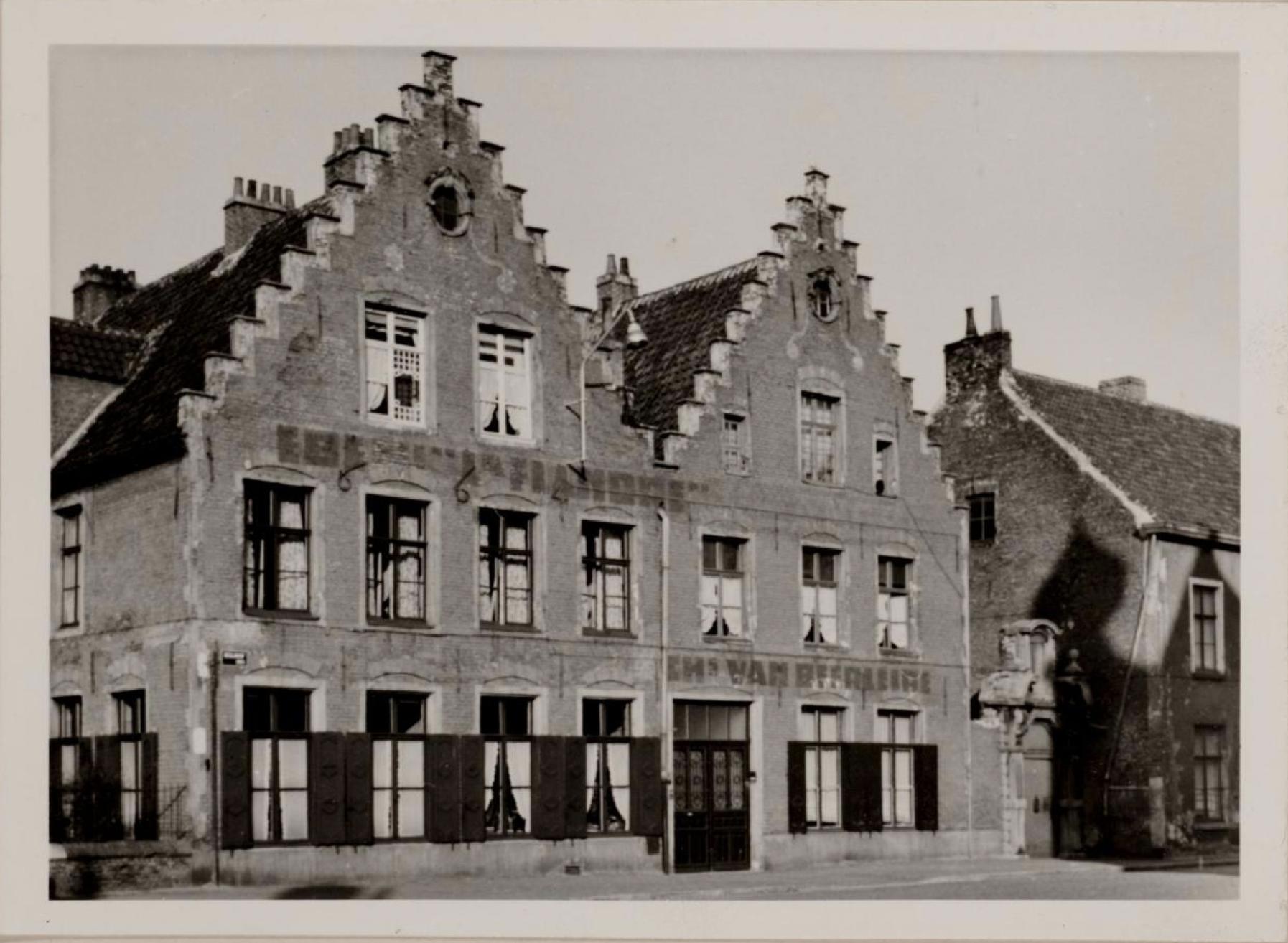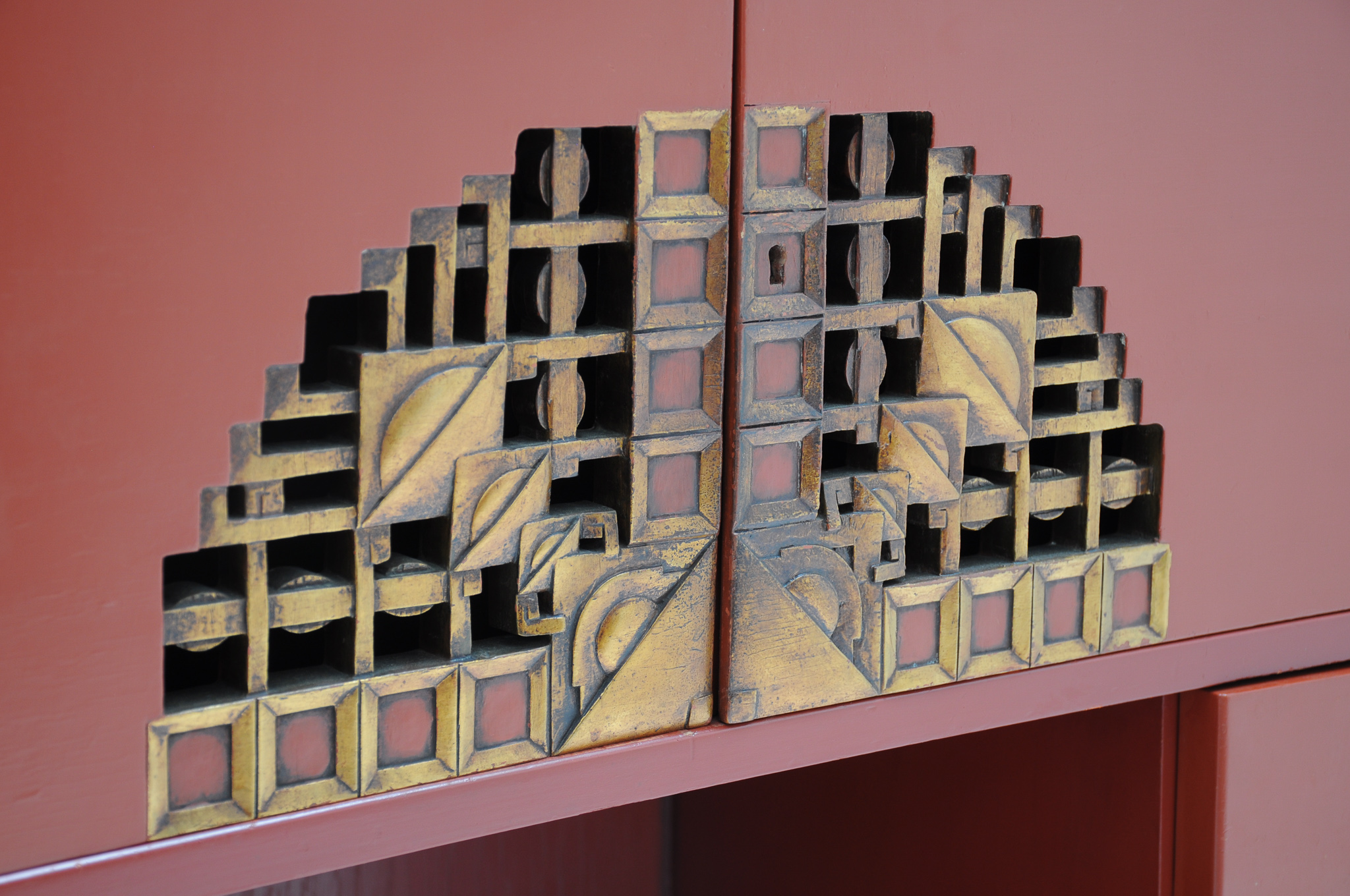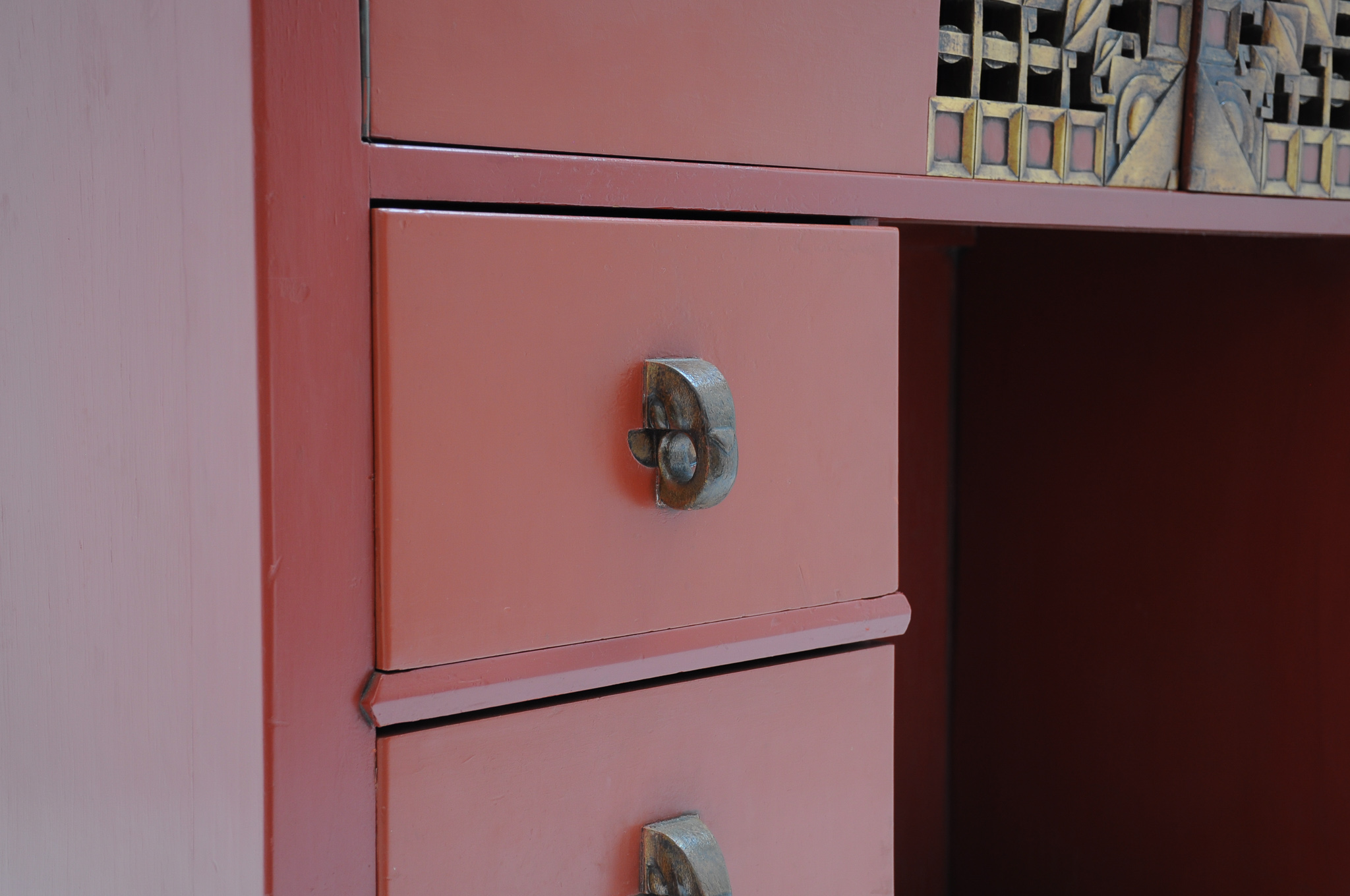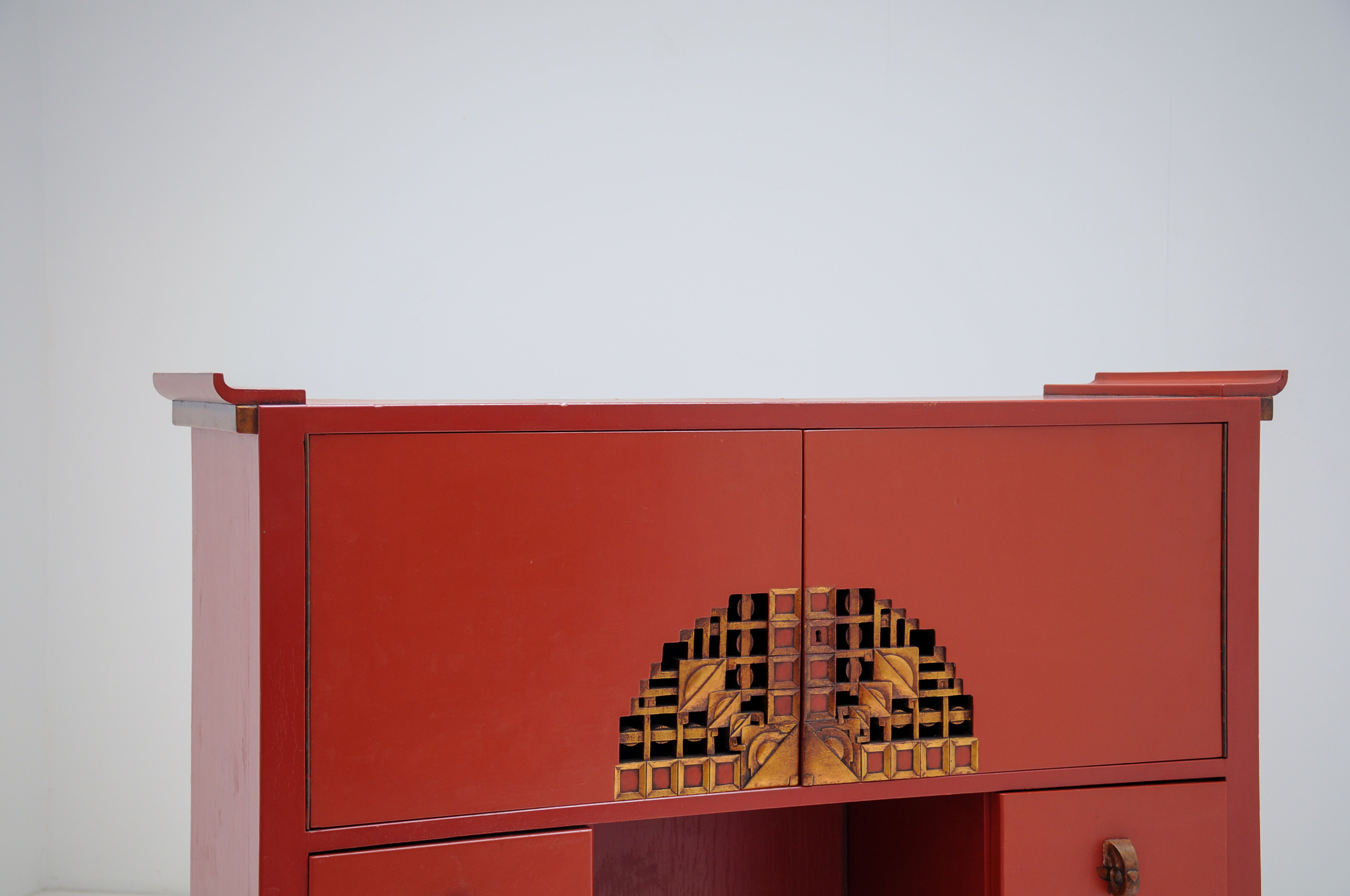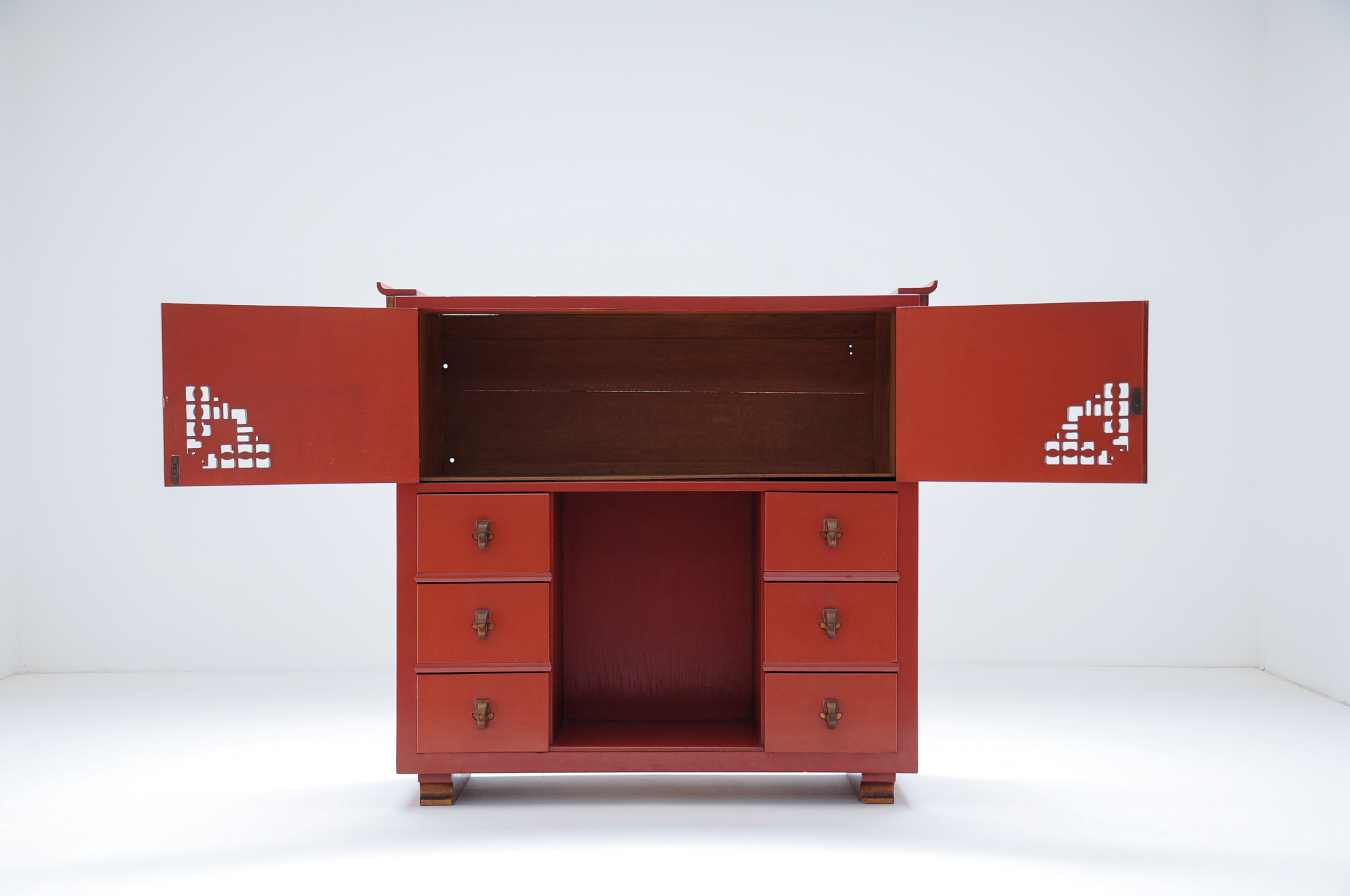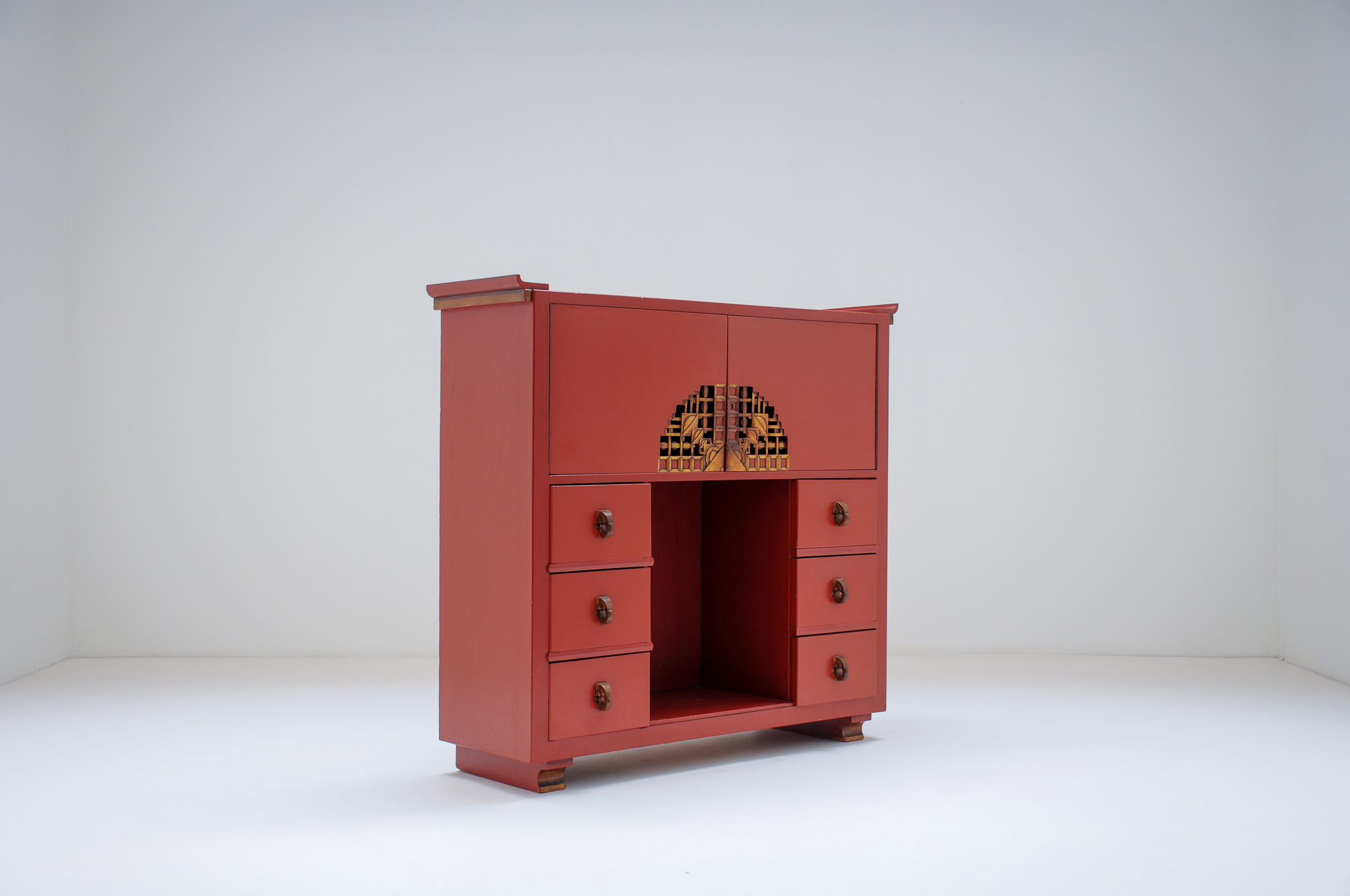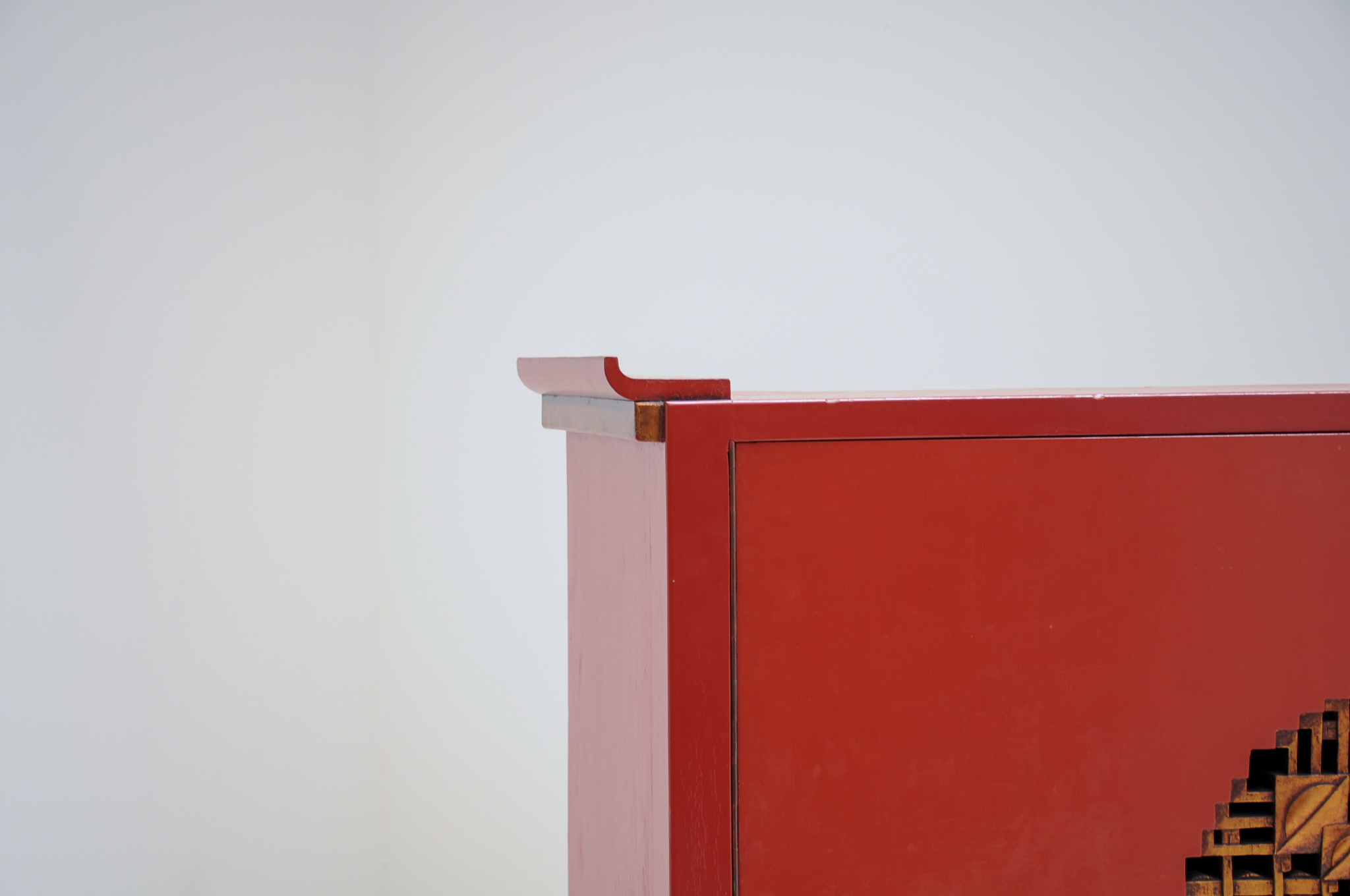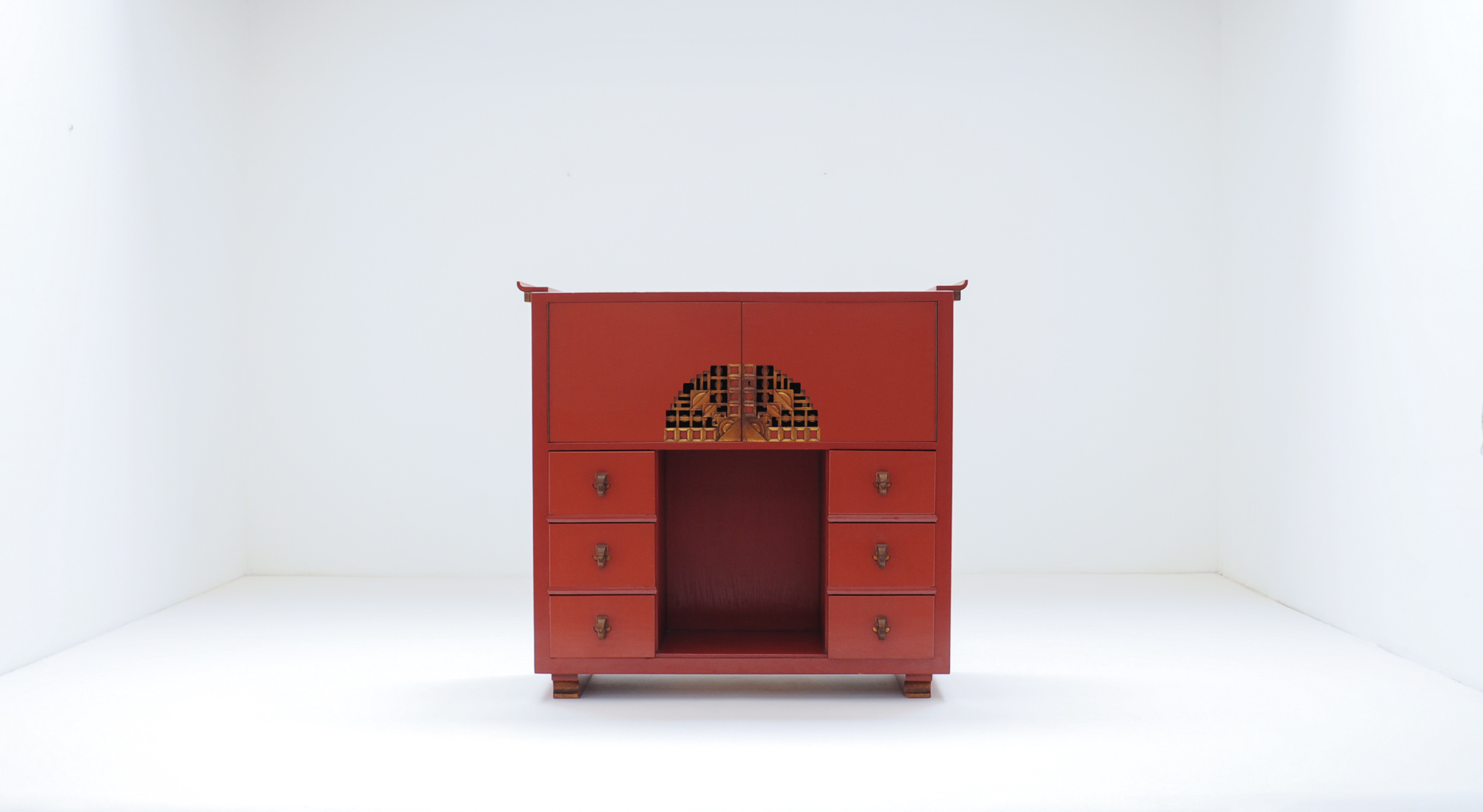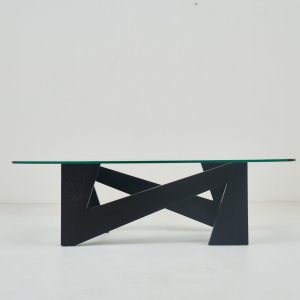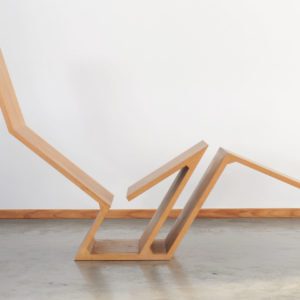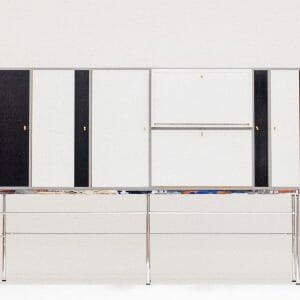Description
A mid-1920s cabinet in a futurist- oriental art deco manner that was typical for the Van Beerleire ateliers ‘La Flandre’ in Ghent, Belgium.
The ateliers ‘La Flandre’ existed for many years and provided high end furniture for numerous important projects in Ghent, Brussels and many other cities & countries in the early 1900s.
Unfortunately the archives of the company are until this day undiscovered, but most probably they have been destroyed. Due to fieldwork of dealers and researchers limited information is available.
Ebenisterie ‘La Flandre’ – Charles Van Beerleire
It was during the ‘exposition internationale des arts decoratifs et industriels modernes paris 1925’ , that Oscar Van de Voorde worked for the first time with Charles Van Beerleire (1886-1955).
Van Beerleire received a dipôme d’honneur for his participation in this Paris international fair. Afterwards both men realized several furniture and interior designs
Oscar Van de Voorde probably also drew other designs for Van Beerleir’s company. .
Van Beerleire’s ensembles are often executed in luxurious materials such as ebony and are decorated with geometric figures, typical of the art deco that caused a furore after the Paris exhibition. It is in this style that Van Beerleir will continue to work.
The company’s regular designer was Philibert Smets (1888- 1948). In addition, Richard Demeyer (1890-1964) was usually called upon to draw and manufacture metal applications. Oscar Van de Voorde would also design furniture for Van Beerleire on a regular basis.
On Oscar Van Voorde
He traveled through France, Italy, Germany, England, and Vienna, where he came into contact with the works of Otto Wagner, the founder of the Vienna Secession. In his later works, he would manage to assimilate and personally interpret the Viennese style, so much so that he was mentioned in the literature of the time by numerous renowned art critics in the same breath as Victor Horta and Henry van de Velde.
Source: Master paper by Thomas de Keere for Ghent university degree in Master in Arts

